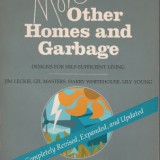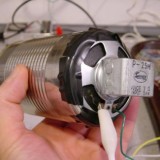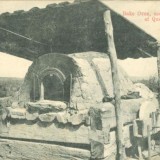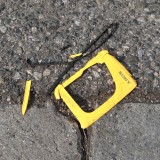
Eric Garcetti at a Lyft party via Twitter.
I had planned an elaborate April Fools Day post for today involving the announcement of a new book entitled The Big Book of Anecdotes for Dentists. For, you know, those awkward times when the dentist has to do a monologue while your mouth is full of dental tools. But then I asked myself why am I making fun of people who work with their hands and minds for long hours in order to alleviate suffering? If anyone deserves good pay and days off to golf, it should be dentists.
Instead I thought I’d discuss what should be an April Fools Day joke but isn’t. And that is Los Angeles’ mayor Eric Garcetti’s appearance at a party last week with Lyft executives to celebrate their initial public offering on Friday. He tweeted, “L.A. is leading America’s transportation revolution, and @Lyft is a part of that promising future. Their spirit of corporate responsibility will guide the future of public-private partnerships that benefit residents first.” Keep in mind this tweet was sent out at the same time as Uber and Lyft drivers were on strike, asking for decent wages. He later tried to excuse his presence at this party saying that he was there to acknowledge an initiative of Lyft’s to donate $5 million towards transportation programs in Los Angeles. Of course any sober economic analysis of Lyft’s impact on the city would, I’m certain, show that it costs us taxpayers way more than $5 million a year in terms of increased traffic and the cost of health care that the company doesn’t provide its “independent contractor” drivers.

Sadly, Eric Garcetti and many others in this city, instead of doing the unglamorous and often politically unpopular task of installing things like dedicated bus lanes and improvements to bike and pedestrian safety, are betting that somehow, someday technology will save us from the already unusable, congested streets of Los Angeles. This city made a bad bet back in the early 20th century on the automobile. Sadly, it’s making another bad bet now on a hoped for future of self driving cars which Lyft and Uber’s business models depend on. I had thought, ten years ago, that Los Angeles’ elected officials were beginning to imagine a future not dependent on cars but that doesn’t seem to be the case.
I’m going to stick my neck out and make a few predictions. Self driving cars won’t work unless they have dedicated lanes. Those dedicated lanes will quickly fill to capacity and we’ll be right back where we started. The artificial intelligence self driving cars depend on is a just a deceptive term for a branch of predictive statistics which may prove useful but should not be compared to human intelligence. The hoped for future that Eric Garcetti is is betting on will never arrive. Meanwhile the changes we need to make right now won’t happen and the city will continue to be congested, dysfunctional and corrupt.

Proposed Institute of the Present headquarters at the Silver Lake Reservoir.
Which leads me in this rambling post to suggest the need for the formation of an Institute of the Present. What if, instead of hoping for self-flying pie in the sky we focused on the things we could do now to make our cities more equitable, livable and, in the process, mitigate the damage of climate change? That’s where the Institute of the Present comes in. Consider the Institute of the Present as the think tank version of flossing your teeth: unpopular and unglamorous but eminently practical, preventative and forward thinking by, paradoxically, being grounded in the present moment. Think trees, affordable housing, bus lanes, trains and a lot of bikes. Our slogan? Be present!
Support Root Simple
The Utopia of Rules: On Technology, Stupidity and the Secret Joys of Bureaucracy. Where does the desire for endless rules, regulations, and bureaucracy come from? How did we come to spend so much of our time filling out forms? And is it really a cipher for state violence?
To answer these questions, the anthropologist David Graeber—one of our most important and provocative thinkers—traces the peculiar and unexpected ways we relate to bureaucracy today, and reveals how it shapes our lives in ways we may not even notice…though he also suggests that there may be something perversely appealing—even romantic—about bureaucracy.






People fret over the impact of X or Y policy or new technology. I ask where all these billions of dollars are coming from with an IPO for companies that have been around for a decade, but have never generated an actual profit.
I’m not convinced $300K – $500K plywood and plastic townhomes in this location would sell since that market segment has already decamped for Vacaville down the highway. Would a collection of 200 unit value engineered Texas Doughnut rental complexes have the effect planners hope for? I don’t think so.
I also believe the whole “Live, Work, Play” meme of cultivating community value is thirty odd years old and is no longer as valid as it once was. That development model is based on attracting (poaching) a select demographic with leisure time and disposable income to support local businesses and spin off tax revenue. What we have instead is an ever shrinking segment of the broad population that’s soaked in debt and experiencing real wage decline.
The real challenge for our communities during the coming crisis will have to involve people lower down the economic food chain solving problems on their own with minimal debt or subsidies. Some version of, “Schlep, Save, Salvage” might be in order to repurpose the existing built environment on a shoestring budget while feeding and housing themselves.
I watched as the Feds pumped trillions of dollars of “liquidity” into the financial markets and dropped interests rates to near zero in response to the 2008 crash. All those hallucinated dollars had to go somewhere….
I look out at the horizon and see an ever devalued fiat currency. At a certain point money itself will lose its legitimacy. That’s a much bigger problem than self driving cabs.
People fret over the impact of X or Y policy or new technology. I ask where all these billions of dollars are coming from with stock valuations for companies that have been around for a decade, but have never generated an actual profit.
I watched as the Feds pumped trillions of dollars of “liquidity” into the financial markets and dropped interests rates to near zero. All those hallucinated dollars had to go somewhere….
I look out at the horizon and see an ever devalued fiat currency. At a certain point money itself will lose its legitimacy. That’s a much bigger problem than self driving cabs.
Traffic has gotten so unbearable in Los Angeles, and I’m sure ride sharing programs only add to it because if you’re not driving but still get places with someone else driving when ordinarily you would have taken public transit, that translates to way more cars on the road generated by ‘convenience’. Have you seen the movie ‘Her’? It takes place in future Los Angeles – the style and clothing is about ten years out, the technology probably 50 years old – the transportation, 100 years. The fact that we don’t have a direct train line to LAX is so laughably sad. I can only dream of L.A. having a transportation system like Vancouver Canada does. That speedy train that takes you from the suburbs to the waterfront in ten minutes! What a dream! In the meantime, having moved to Portland Oregon, I am hoping the city continues to shape transit the right way. Rail construction is slow but steady so far.
Pingback: GM and the Red Cars | Root Simple
Yes. An institute for the present. “Futurists” phooey. Root Simple is the true oracle of the internets. Thanks for another good one!
Pingback: A Springtime Poetry Break | Root Simple
Pingback: How FilmLA Blocks Bike Lanes | Root Simple